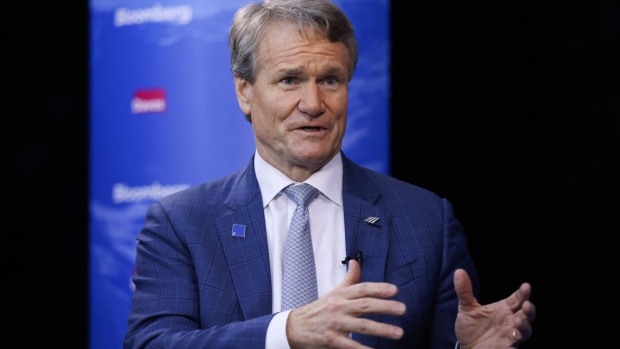Mar 19, 2024
BofA’s Moynihan Says Commercial Real Estate Will Be ‘Slow Burn’
, Bloomberg News

(Bloomberg) -- Bank of America Corp.’s Chief Executive Officer Brian Moynihan said it’ll take time for the banking industry to work through issues with commercial real estate loans, after a New York regional lender alarmed investors with its exposure in the troubled sector.
“Commercial real estate is a slow burn — it’s a classic burn,” Moynihan said in a Bloomberg Television interview Tuesday from the bank’s trading floor. “The trading attitude, which is these assets have to move at a price tomorrow morning, isn’t the way the banking system works.”
Last year was a bleak one across the banking industry. In the first half, dozens of regional lenders swooned — and some collapsed — as rising interest rates slashed the value of assets on their books, saddling US banks with hundreds of billions of dollars of unrealized losses. Some lenders started raising the possibility of defaults on commercial real estate loans, and the problem has yet to subside, with New York Community Bancorp getting a cash infusion this month amid property-loan troubles of its own.
“We work with clients — you take a building and figure out what the ultimate end state rental rolls will provide, you refinance it, sometimes that wipes out the equity, sometimes it doesn’t,” Moynihan said. “We’re careful in how we underwrite as an industry.”
The market disruption across the board last year allowed Bank of America to take market share, according to Wendy Stewart, the firm’s president of global commercial banking. She added that the business she oversees has seen strong loan growth and that her team is continuing to invest to help clients.
“We’re really making investments in our team,” Stewart said. “We continue to hire more bankers, and we’re making a lot of investment in digital.”
Read More: BofA Gets More Than $15 Billion in Deposits After SVB Fails
‘Tremendous Amount’
Moynihan said the quarter has been strong for its trading business and that while investment banking revenues across the industry have stabilized, there’s still pressure on deals to bounce back.
And within its wealth division, the firm has seen investors start to put more cash to work, according to Lindsay Hans, president of Merrill Wealth Management. Since the fourth quarter, clients have been seeking out equities and fixed income products as well as access to private markets, she said. The business’s alternative investments assets have doubled in the past five years, according to Hans.
“We still see a tremendous amount of cash on the sidelines,” Hans said. “That money is going to get put to work.”
Shares in the bank were little changed at 10:10 a.m. They are up more than 7% this year.
The firm reported net income of $26.5 billion last year, down from $27.5 billion in 2022. The Charlotte, North Carolina-based company has said it’s focused on keeping expenses in check and has used attrition to bring its headcount down without taking a meaningful severance charge, which can be a drain on profit.
The bank is on track to meet its previous guidance for net interest income this quarter, Chief Financial Officer Alastair Borthwick said at a conference this month, with investment-banking revenue up as much as 15% from a year earlier and sales and trading revenue likely to be little changed.
Read More: BofA’s Investment-Banking Unit on Track for 15% Revenue Growth
Bank of America is scheduled to report its first-quarter results next month. With interest rates remaining elevated and investors awaiting expected cuts by the Federal Reserve, lending and consumer spending have slowed. High rates have been a drag for earnings at Bank of America, which had piled into long-dated Treasuries and mortgage bonds in years when rates were lower. Still, consumers have been “remarkably resilient,” Moynihan said Tuesday.
Moynihan, one of the longest-serving heads of a large US bank, has signaled his interest in staying on for years to come. He reiterated that he remains uninterested in a Washington post, saying, “I’ve got a great job here.”
(Updates with shares, executive comments from eighth paragraph.)
©2024 Bloomberg L.P.





